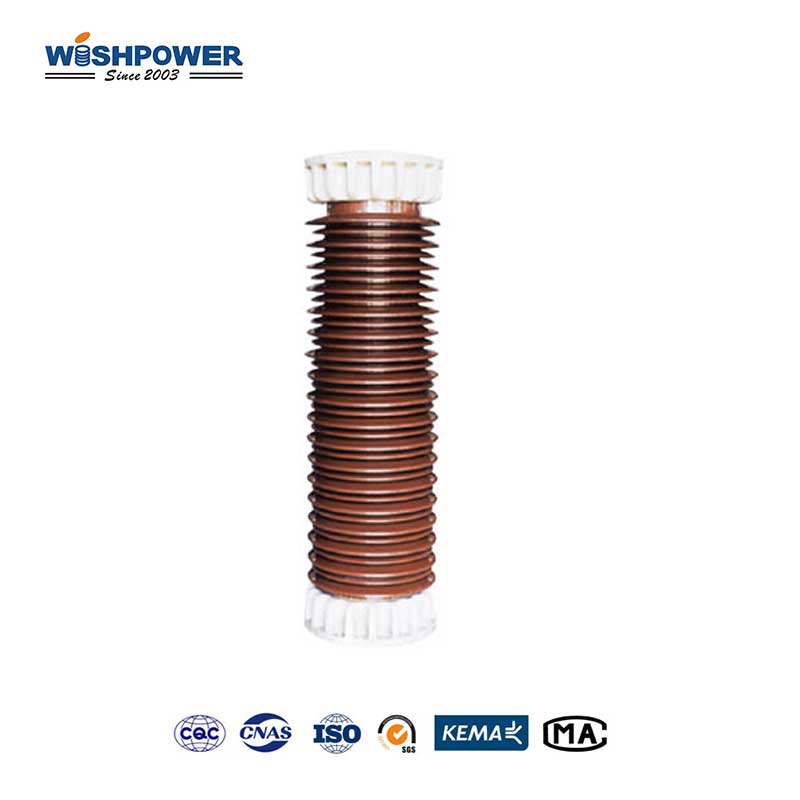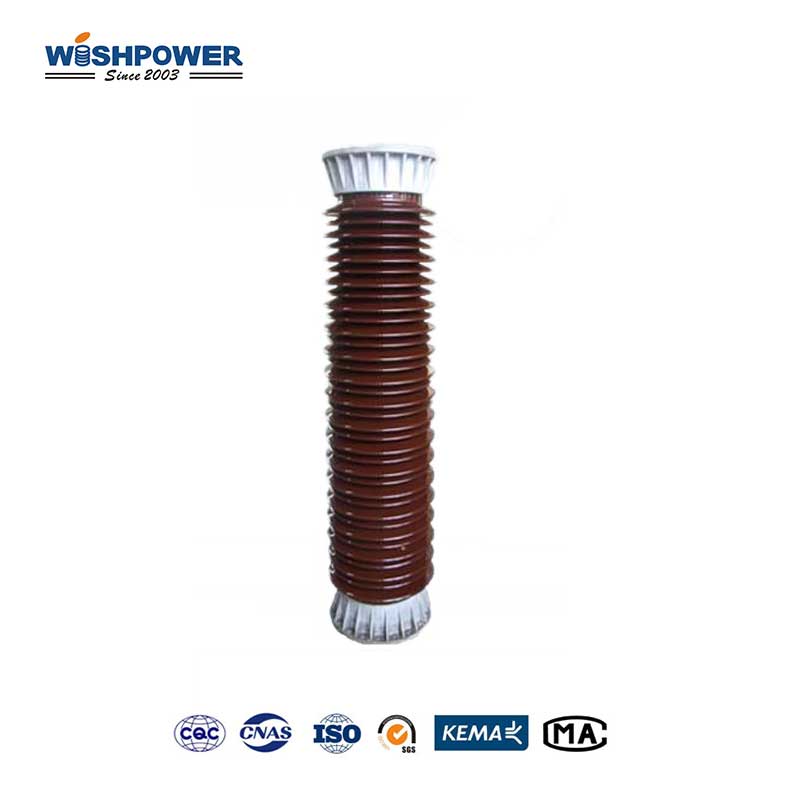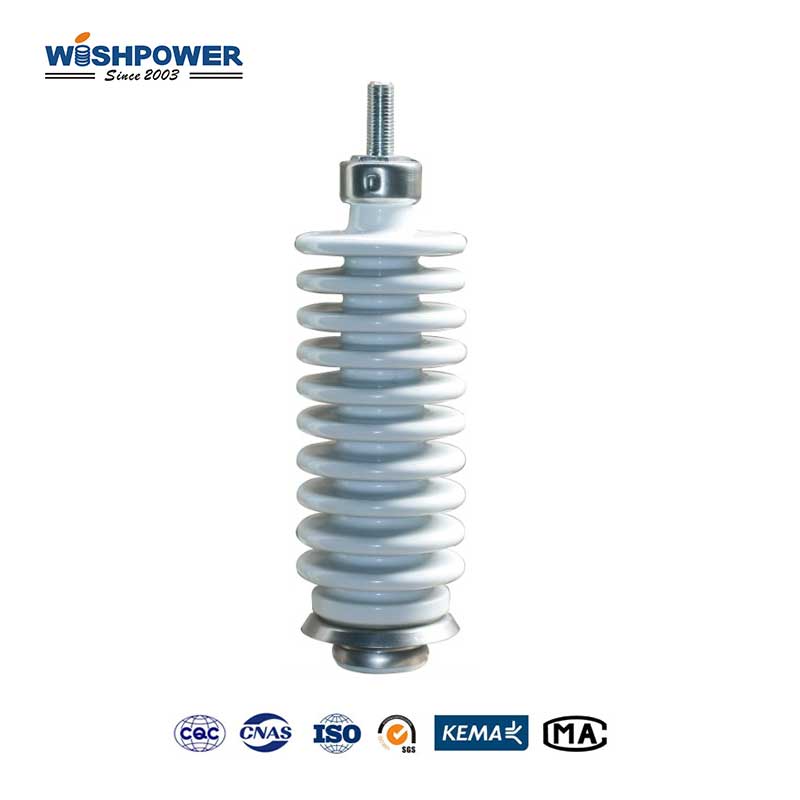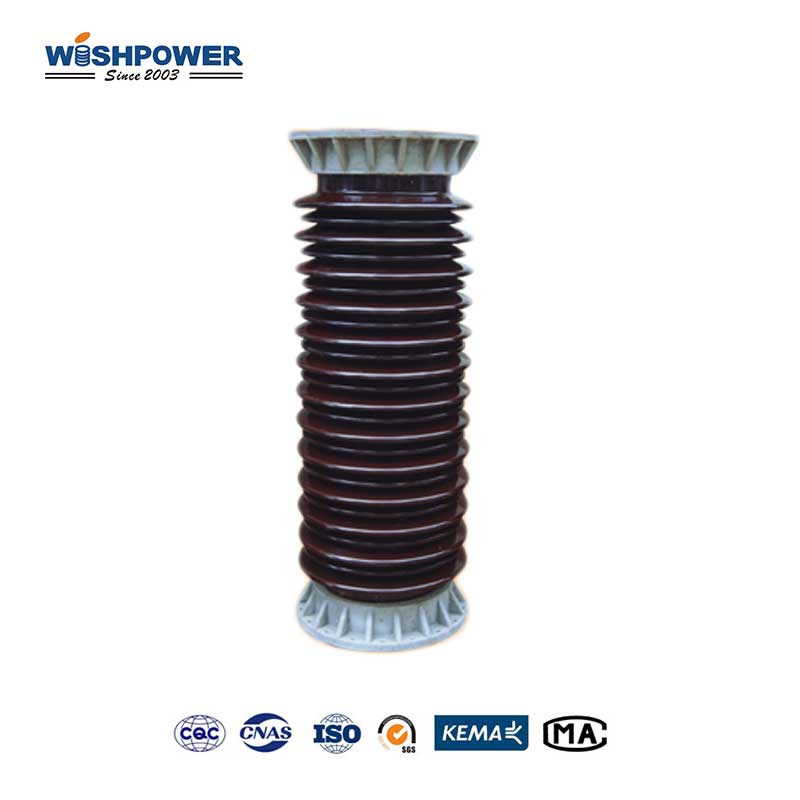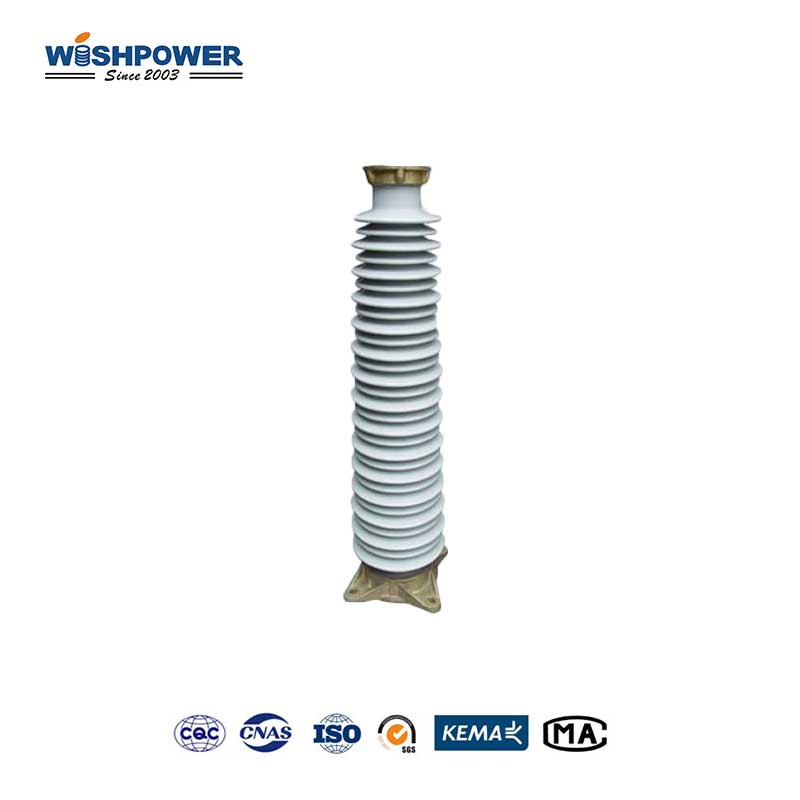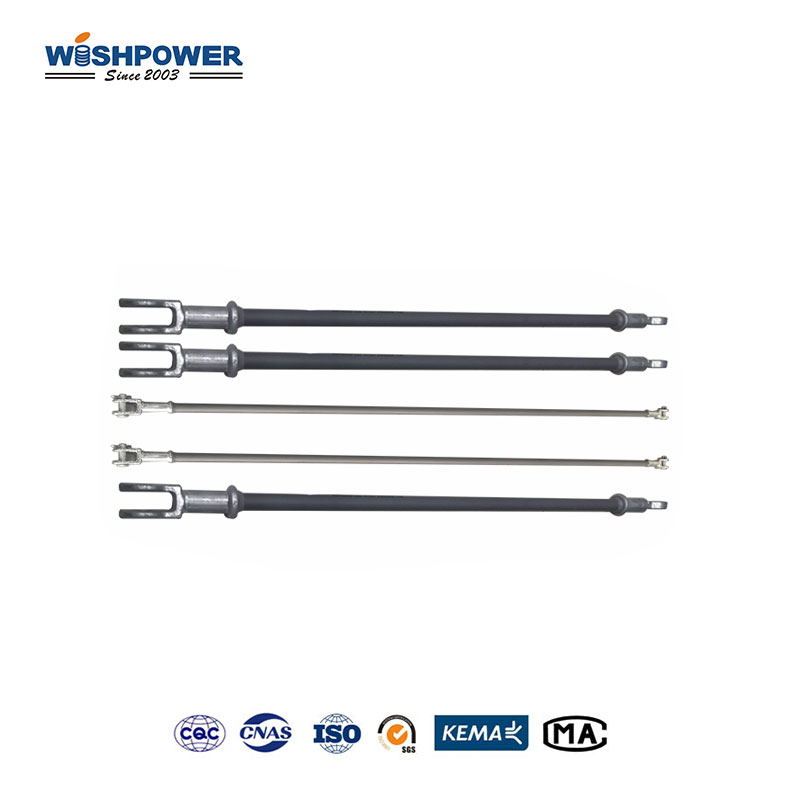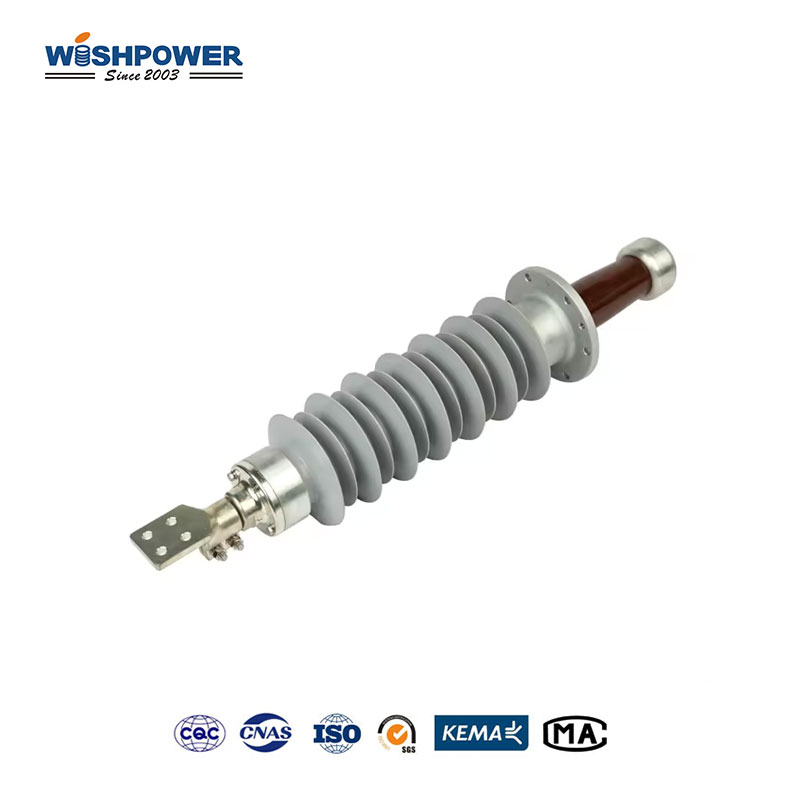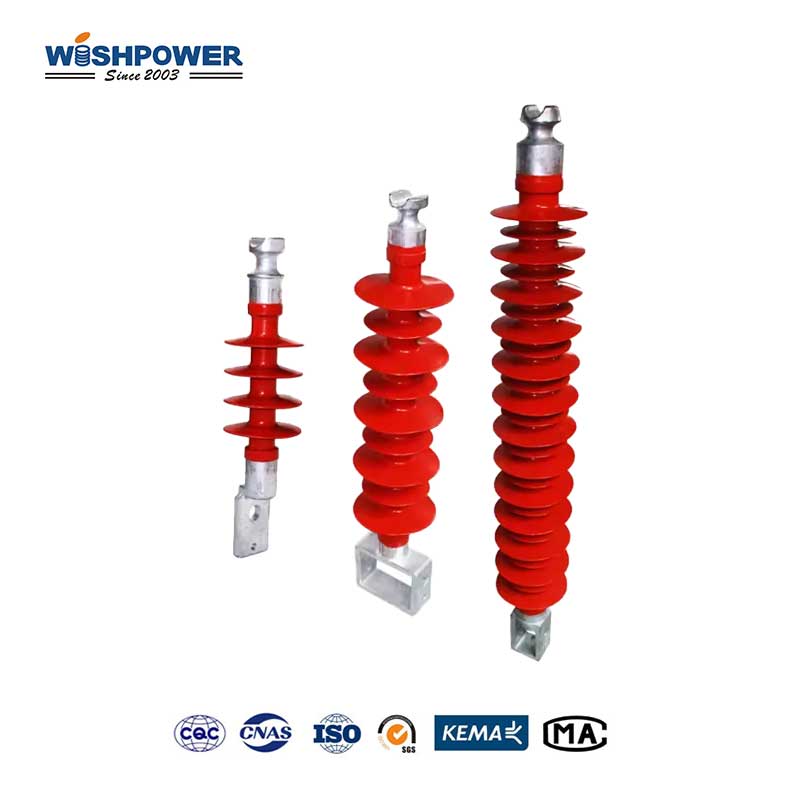Specification
| Rated Voltage(kV) |
550 |
| Shed No. |
17/16 |
| Creepage Distance(mm) |
5156 |
| Main Dimensions(mm ) |
H |
1700 |
| h1 |
140 |
| h2 |
140 |
| D |
495 |
| d |
265 |
| d1 |
455 |
| d2 |
455 |
| n-d1 |
18-φ16 |
| Weight(kg) |
423 |
The table above is just one of our product parameters. If you want more information, please get in touch with info@wishpower.net
What is Capacitor Porcelain Bushing?
Capacitor Porcelain Bushing is an essential accessory in high-voltage capacitor systems it is used to insulate and join the internal capacitive parts to the external circuitry systems. Porcelain which is characterized by excellent insulating properties as well as mechanical strength is used to manufacture this bushing to safely pass electrical current and to avoid electrical discharging of phases to the earth via the grounded terminals of the capacitor. Its design also helps to metalize that bushing is capable of handling high electrical stresses that are common in capacitor use, especially when operating under high voltage or high temperatures. The porcelain material that is shaped with sheds or ribs proves to enhance the performance of the bushing in harsh environments since it minimizes chances of contamination by dust, moisture as well as pollutants. This feature is crucial in keeping the general performance and integrity of the capacitor given that the usable capacitor will experience harsh weather conditions or extreme environments.
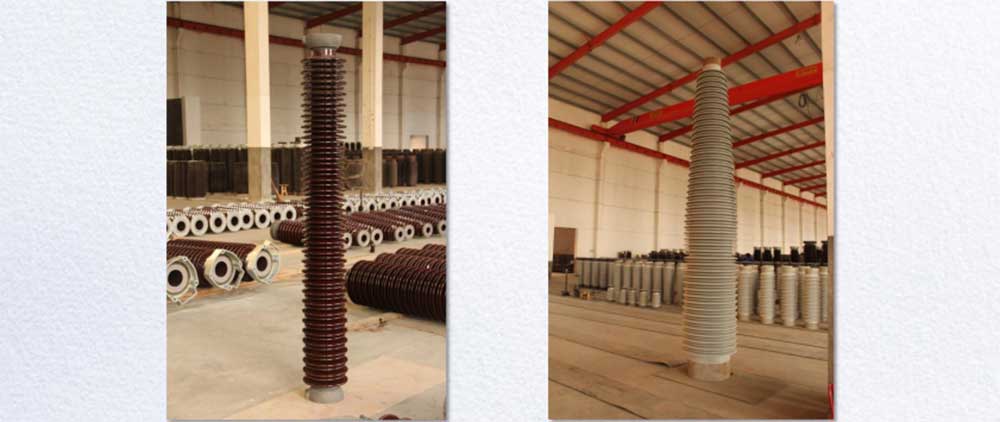
Features
- High-voltage insulation:
Capacitor bushing is manufactured to meet the insulation levels of the capacitor system to protect the systems against large electrical stresses.
- Specialized design for capacitor systems:
These bushings are accurately developed for capacitors mainly concentrating on joining internal capacitor parts with the external circuit. This makes their design more refined than the bushing that is used in transformers or even other equipment.
- Optimized for high electrical stress:
It is specifically optimized to handle the various electrical stresses that relate to capacitors, especially in systems where voltage levels can vary with time such as in power factor correction.
- Improved resistance to contamination:
It normally has numerate ultra-complex ribs to filter features such as dust and moisture to maximize its performance and durability than other kinds of porcelain bushings.
- Mechanical stability:
It gives mechanical support but they put more effort towards maintaining connection stability in capacitor systems as capacitors might not operate under the same mechanical as well as electrical conditions as transformers or any other equipment.
Maintenance Tips
- Regular Visual Inspections:
Meet the vulnerability of checking the porcelain surface and the insulation as visible signs that could portray crack, chipping, contamination, and other related factors that reduce insulation competence.
- Cleaning of Surface Contaminants:
It is also important to ensure that the capacitive bushing surface is clean by wiping off dust, moisture, and pollutants.
- Monitoring for Leakage:
Check for outflow of oil or gas in those bushing that contain internally-impregnated oil as this causes deterioration of the capability of the insulation surrounding the capacitor as well as retarding the performance of the capacitor system.
- Electrical Testing:
Perform incremental dielectric to check on the state of insulation of the bushing. The detection of degradation of insulation provides surety against possible failure in high-voltage systems.
- Check for Mechanical Integrity:
Check that the bushings are well-torqued and have no mechanical stress or any form of vibration on them, which are factors that will weaken the bushing and compromise the stability of the electrical connection.
Material Comparisons
Porcelain VS Polymer:
Porcelain insulator bushing has excellent thermal and electrical insulation characteristics, these bushings are used in high-voltage systems. Polymer bushings, on the other hand, are more lightly weighted, and comparatively easy to manipulate; however, its thermal stability and UV defense may be relatively low which can result in such bushings degrading over time.
Porcelain VS Glass:
Both porcelain and glass have good resistance to heat conducting properties, but porcelain has higher strength and resistance to mechanical stress as compared to glass items, therefore porcelain is suitable to be used outdoors. Glass bushings can be even more delicate, and not very resistant to shock, thermal or otherwise.
Porcelain VS Composite Materials:
In some cases, material composites are used for bushings as they improve performance based on weight and flexibility. Nonetheless, porcelain still enjoys a preference for high-voltage use because of its dependable service record and insensitivity to ecological conditions for this sort of application.
Certificate

Factory

Hot Tags: Capacitor Porcelain Bushing, Porcelain Bushing, China, manufacturers, ISO factory, wholesale, KEMA, high quantity, best, price, low to high voltage






